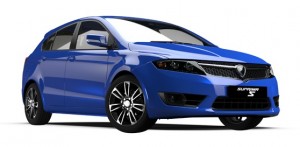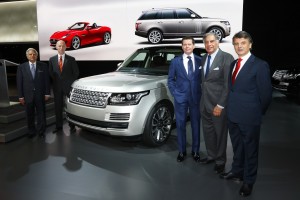
Does your car’s country of origin matter? There’s a direct relationship between national car brands and what people think of a country and vice-versa, and you don’t need a fancy survey to know it exists.
 Obviously, a country that produces iconic products attracts world admiration for the people and culture that created them. “Porsche” and “Proton” call to mind very different associations, for example. That’s not a cheap shot – Proton is, after a fashion, improving all-round and does make good-driving cars, but there is a mountain of historical brand association to undo.
Obviously, a country that produces iconic products attracts world admiration for the people and culture that created them. “Porsche” and “Proton” call to mind very different associations, for example. That’s not a cheap shot – Proton is, after a fashion, improving all-round and does make good-driving cars, but there is a mountain of historical brand association to undo.

However, we take heart from Japan, whose post-war cars were once the butt of jokes, not unlike China’s now. Japan shows that you can transcend your market reputation by drawing deep on the best qualities of your national culture. (What are the best qualities of Malaysian culture? Answers on a postcard, please. Winner gets a prize.)
In the case of Japan versus Europe, Made in Japan still loses out for cachet to Made in Germany, though it probably still beats Made in France. What about Made in Italy? Arguably, the Italians still take the cake. Give us the gorgeous halo of the Ferrari GTO over the godzilla oomph of a Nissan GT-R. As for Made in the UK, it doesn’t exist, except as German and Indian-owned brands, even if the cars are still made in Blighty.

So much for bragging rights. Are there real differences in the way their cars drive, and in the ownership experience? Will it make a difference to your purchase decision? We can’t decide for you, but we think so.
On the whole, Japanese cars are very proper. Not a hair or tyre tread out of place. They do as they’re told, while doing their best to save you from your God delusion. For example, the aforementioned GT-R has beastly power, but it is harnessed to some serious computer chippery and will do its ganbatte best to stop you from investigating the tree too closely – unless, of course, you insist.
The best of Japan will not fail you, except for the unavoidable lemon assembled outside Japan. And if they do, they become so embarrassed that they will voluntarily recall themselves to the factory to be disassembled. If you like to procrastinate, Japanese cars are very forgiving of missed service appointments, even when they’re disguised as Malaysian cars.  (Take a bow, Perodua Kelisa.) Your correspondent once drove one such specimen in KL without fixing the horn for two whole years and nothing hit us! Somehow, it knew its horn was broken and told the other vehicles to please keep their distance – even the Mat Rempit. Some say Japanese cars are inoffensive. We say they have a way of getting along.
(Take a bow, Perodua Kelisa.) Your correspondent once drove one such specimen in KL without fixing the horn for two whole years and nothing hit us! Somehow, it knew its horn was broken and told the other vehicles to please keep their distance – even the Mat Rempit. Some say Japanese cars are inoffensive. We say they have a way of getting along.
 Factory-spec Japanese cars, however well-turned out, tend to look alike, even (or especially) the upmarket ones. They’re not so much designed by committee as a hive-mind. This collective resource can have tremendous benefits for setting new automotive standards. When the first-ever Lexus appeared, the finesse of its build and engineering showed the individualistic continentals just what they were missing – a hive-mind devoted to a cause.
Factory-spec Japanese cars, however well-turned out, tend to look alike, even (or especially) the upmarket ones. They’re not so much designed by committee as a hive-mind. This collective resource can have tremendous benefits for setting new automotive standards. When the first-ever Lexus appeared, the finesse of its build and engineering showed the individualistic continentals just what they were missing – a hive-mind devoted to a cause.
By the time the first-generation Lexus LS400 was updated, the eternally buzzing Japanese engineers had identified that it was not just the decibel-level of cabin noise that caused fatigue, but its type and frequency. The human brain is most sensitive to the mid-frequencies associated with speech, and to noise (like hissy fits), rather than to fixed frequencies (do re mi so la ti do, etc). The source of this mid-frequency noise was traced to the resonances created by the rolling tyre in the wheel well of the Lexus…many moons later, Mercedes-Benz would address the same in the flared wheel arches of its S-Class.

So, why buy a continental car? Because, despite rampant platform-sharing by manufacturers in Europe, they will never be as homogenous as the Japanese. If you could blind-test cars, you would (still) be able to tell a rakish BMW apart from a bling but buttoned-down Mercedes-Benz, apart from an operatic Alfa Romeo and apart from a Peugeot. It’s harder to generalise about continental cars than about Japanese ones, other than by the more reassuring heft of their controls and planted-ness on the road. The best usually also have a clear and distinctive design language – you know them when you see them.
Alas, the individuality of continental cars is shrinking as economic globalisation, overcapacity, declining shareholder value and board approval combine to make design by committee mandatory. Still, they somehow manage to express a certainty of their place in the world and pride in their multicultural origin. This could be why they’re the default choice of rappers, drug lords and politicians unsure of theirs.
And that’s why, ladies and gentlemen, we end up buying more cars than we’ll ever need.
Jason Tan was founder and editor of Off The Edge and The B-Side. He happens to like cars.